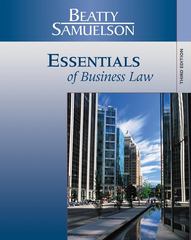Question
Suppose there are n firms in a Cournot oligopoly. Inverse demande is given by P(Q)=a-Q, where Q = q1 + ..... + qn. Consider the
Suppose there are n firms in a Cournot oligopoly. Inverse demande is given by P(Q)=a-Q, where Q = q1 + ..... + qn. Consider the infinitely repeated game based in this stage game. 1. What is the lowest value of such the firms can use trigger stategies to substain the monpoly output level in a subgame-perfect Nash equilibrium? 2. How does the answer vary with n, and why? 3. If is too small for the firms to use trigger strategies to sustain the monopoly output, what is the most-profitable symmetric subgame-perfect Nash equilibrium that can be sustained using trigger strategies?Suppose there are n firms in a Cournot oligopoly. Inverse demande is given by P(Q)=a-Q, where Q = q1 + ..... + qn. Consider the infinitely repeated game based in this stage game. 1. What is the lowest value of such the firms can use trigger stategies to substain the monpoly output level in a subgame-perfect Nash equilibrium? 2. How does the answer vary with n, and why? 3. If is too small for the firms to use trigger strategies to sustain the monopoly output, what is the most-profitable symmetric subgame-perfect Nash equilibrium that can be sustained using trigger strategies?Suppose there are n firms in a Cournot oligopoly. Inverse demande is given by P(Q)=a-Q, where Q = q1 + ..... + qn. Consider the infinitely repeated game based in this stage game. 1. What is the lowest value of such the firms can use trigger stategies to substain the monpoly output level in a subgame-perfect Nash equilibrium? 2. How does the answer vary with n, and why? 3. If is too small for the firms to use trigger strategies to sustain the monopoly output, what is the most-profitable symmetric subgame-perfect Nash equilibrium that can be sustained using trigger strategies?Suppose there are n firms in a Cournot oligopoly. Inverse demande is given by P(Q)=a-Q, where Q = q1 + ..... + qn. Consider the infinitely repeated game based in this stage game. 1. What is the lowest value of such the firms can use trigger stategies to substain the monpoly output level in a subgame-perfect Nash equilibrium? 2. How does the answer vary with n, and why? 3. If is too small for the firms to use trigger strategies to sustain the monopoly output, what is the most-profitable symmetric subgame-perfect Nash equilibrium that can be sustained using trigger strategies?Suppose there are n firms in a Cournot oligopoly. Inverse demande is given by P(Q)=a-Q, where Q = q1 + ..... + qn. Consider the infinitely repeated game based in this stage game. 1. What is the lowest value of such the firms can use trigger stategies to substain the monpoly output level in a subgame-perfect Nash equilibrium? 2. How does the answer vary with n, and why? 3. If is too small for the firms to use trigger strategies to sustain the monopoly output, what is the most-profitable symmetric subgame-perfect Nash equilibrium that can be sustained using trigger strategies?
Step by Step Solution
There are 3 Steps involved in it
Step: 1

Get Instant Access to Expert-Tailored Solutions
See step-by-step solutions with expert insights and AI powered tools for academic success
Step: 2

Step: 3

Ace Your Homework with AI
Get the answers you need in no time with our AI-driven, step-by-step assistance
Get Started


